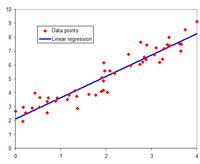
Photo from wikipedia
We present a method based on combining a smooth generalized pinball support vector machine (SVM) and variational autoencoders (VAEs) in chest X-ray (CXR) images. We incorporate generalized pinball into the… Click to show full abstract
We present a method based on combining a smooth generalized pinball support vector machine (SVM) and variational autoencoders (VAEs) in chest X-ray (CXR) images. We incorporate generalized pinball into the SVM model to address the hinge loss function’s noise sensitivity and resampling instability. Since the generalized pinball loss is a non-differentiable function, the objective function is non-differentiable. To solve the non-differentiable term in the model’s objective function, we construct a smooth approximation function for the generalized pinball loss function so that the model in the original space can be solved directly. More specifically, using the proposed smoothing functions, we employ the smoothing stochastic quasi-Newton method to solve the primal problem. Moreover, we have introduced verified theorems related to our approaches, and the theoretical convergence of our approaches has been proposed. Numerical comparisons between parameter values of several iteration objective functions are also provided to test the model. Experiments with several benchmark datasets show that our method has the best prediction accuracy 64% and 57% from all of binary datasets and multiclass datasets, respectively. Moreover, our method has the best prediction of Matthews correlation coefficient (MCC) 64% from all of datasets.
Journal Title: IEEE Access
Year Published: 2022
Link to full text (if available)
Share on Social Media: Sign Up to like & get
recommendations!